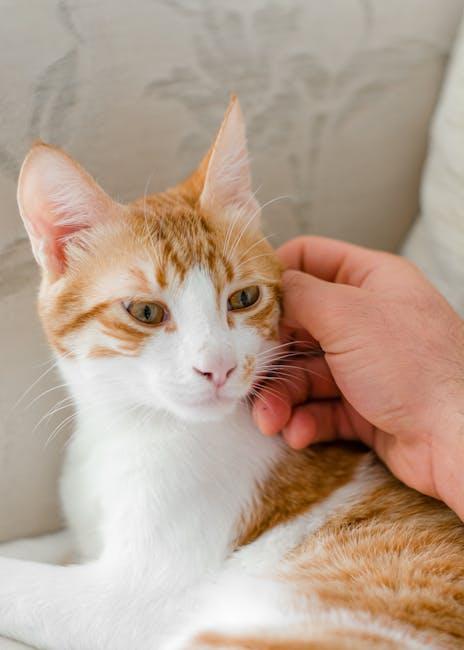How to Use Hand Signals for Advanced Pet Commands

In the world of pet training, communication is key. While verbal commands are commonly used to guide and instruct our furry companions, hand signals offer an often underutilized yet highly effective method of communication. Whether you have a dog that is hearing-impaired or simply wish to enhance your training repertoire, learning how to use hand signals for advanced pet commands can significantly improve your pet’s responsiveness and strengthen the bond you share. This article will guide you through the process of introducing hand signals to your training routine, exploring the benefits, techniques, and best practices to ensure clarity and consistency. With patience and practice, you’ll be able to convey complex commands with a simple gesture, opening up new avenues for interaction with your pet.
Understanding the Basics of Hand Signals for Pets
Hand signals can serve as a powerful tool in enhancing communication with your pets. These non-verbal cues are particularly beneficial for dogs and other animals who are either hearing impaired or in noisy environments. Understanding the fundamentals of hand signals involves associating specific gestures with commands your pet already knows. For example, a raised palm might signify “sit,” while a closed fist could indicate “stay.” The key is consistency and clarity, ensuring your pet can easily recognize and respond to each gesture.
When introducing hand signals, it’s essential to pair them with verbal commands initially. Over time, as your pet begins to understand the correlation, you can gradually phase out the verbal cues. Here are some basic tips to get started:
- Choose Distinct Signals: Make sure each gesture is unique and easy for your pet to distinguish.
- Practice Regularly: Consistency is crucial. Regular practice will help reinforce the association between the signal and the command.
- Reward Success: Use treats or affection to reward your pet when they correctly respond to a hand signal.
- Be Patient: Learning takes time. Be patient and persistent as your pet adapts to this new form of communication.
Choosing the Right Hand Signals for Different Commands
When teaching your pet advanced commands, selecting the appropriate hand signals can significantly enhance communication and ensure consistency. Hand signals should be clear, distinct, and easy to remember. Opt for gestures that are simple yet visually different from one another to avoid confusion for your pet. Here are some tips to guide you:
- Consistency is Key: Always use the same hand signal for the same command. This consistency helps your pet understand and remember what is expected.
- Visibility Matters: Choose signals that are visible from a distance. This is particularly important for commands like “stay” or “come,” which might be used when your pet is further away.
- Incorporate Natural Movements: Utilize natural gestures that feel comfortable to perform. This will make it easier for you to remember and execute the signals.
- Practice Regularly: Regular practice with your pet will reinforce the association between the hand signal and the command, leading to more reliable responses.
By thoughtfully selecting and consistently using hand signals, you can create a robust communication system with your pet, enhancing your training sessions and strengthening your bond.

Training Techniques for Effective Hand Signal Communication
Mastering hand signals for pet commands can greatly enhance communication with your furry friend, fostering a deeper bond and ensuring more responsive behavior. Consistency is crucial; use the same gesture for each command every time. Start by selecting simple, distinct signals for basic commands like “sit,” “stay,” or “come.” Pair these signals with verbal commands initially, gradually phasing out the words as your pet begins to respond to the gestures alone.
Incorporate positive reinforcement to encourage your pet to associate hand signals with rewards. This can include treats, praise, or playtime. Here are some tips to ensure effective learning:
- Practice in different environments to generalize the behavior.
- Keep training sessions short and engaging to maintain interest.
- Use clear, distinct gestures to avoid confusion.
- Be patient and adjust techniques based on your pet’s response.
Over time, with patience and practice, your pet will respond to hand signals as intuitively as they do to verbal commands, opening up a new dimension of understanding between you.

Common Mistakes and How to Avoid Them in Hand Signal Training
When teaching advanced commands through hand signals, several pitfalls can hinder your pet’s progress. Inconsistent signals are a common error; ensure that each hand gesture is distinct and consistently used for the same command. Changing your signal even slightly can confuse your pet, leading to mixed responses. Lack of patience is another frequent mistake. Pets learn at their own pace, and rushing the process can create anxiety and hinder learning.
To avoid these issues, consider the following tips:
- Consistency is key: Use the same signal for each command every time.
- Keep it simple: Choose clear and simple gestures that are easy for your pet to recognize.
- Reinforce with rewards: Use treats or praise to reinforce successful responses to hand signals.
- Practice regularly: Regular sessions help reinforce learning and ensure your pet remains responsive.
By being aware of these common mistakes and implementing these strategies, you’ll enhance the effectiveness of hand signal training for advanced commands.



